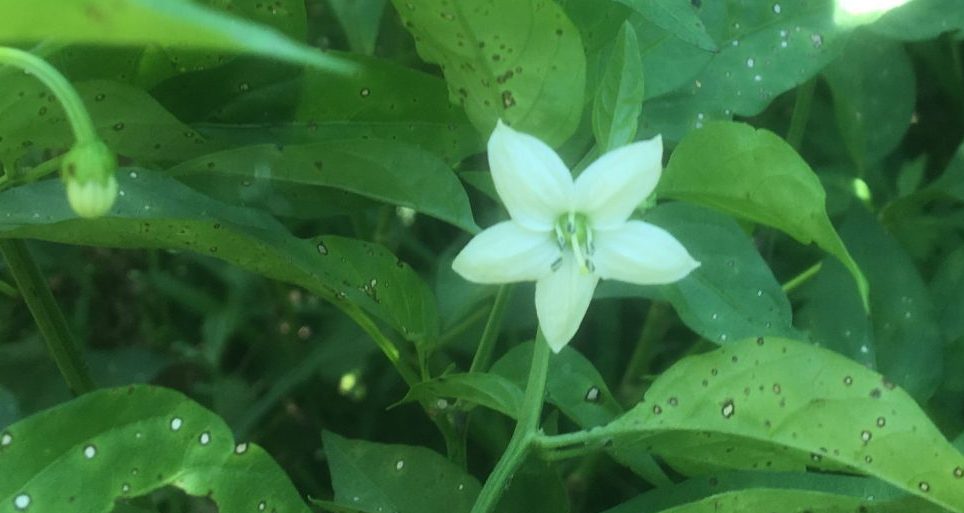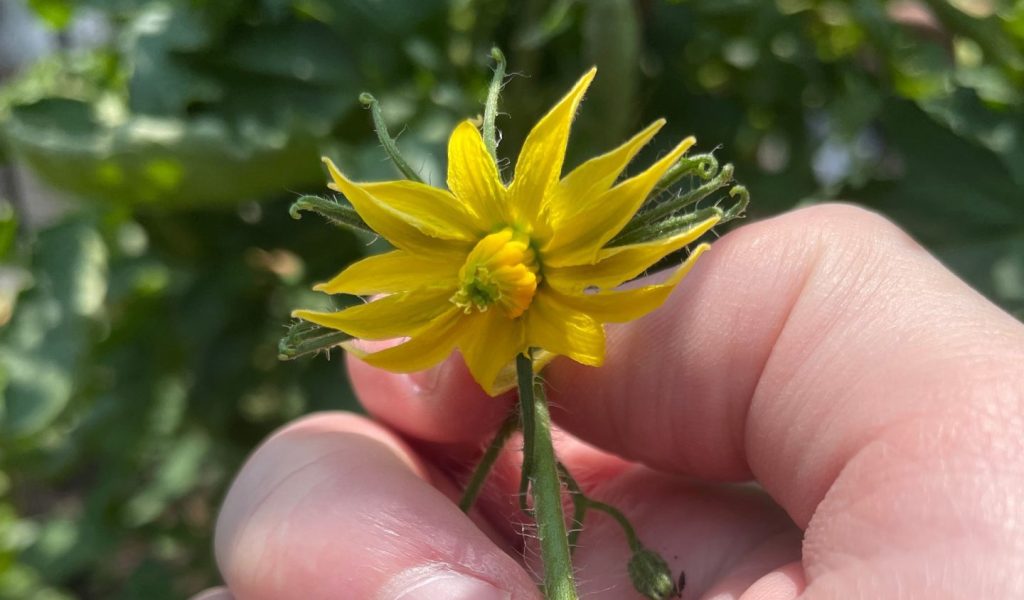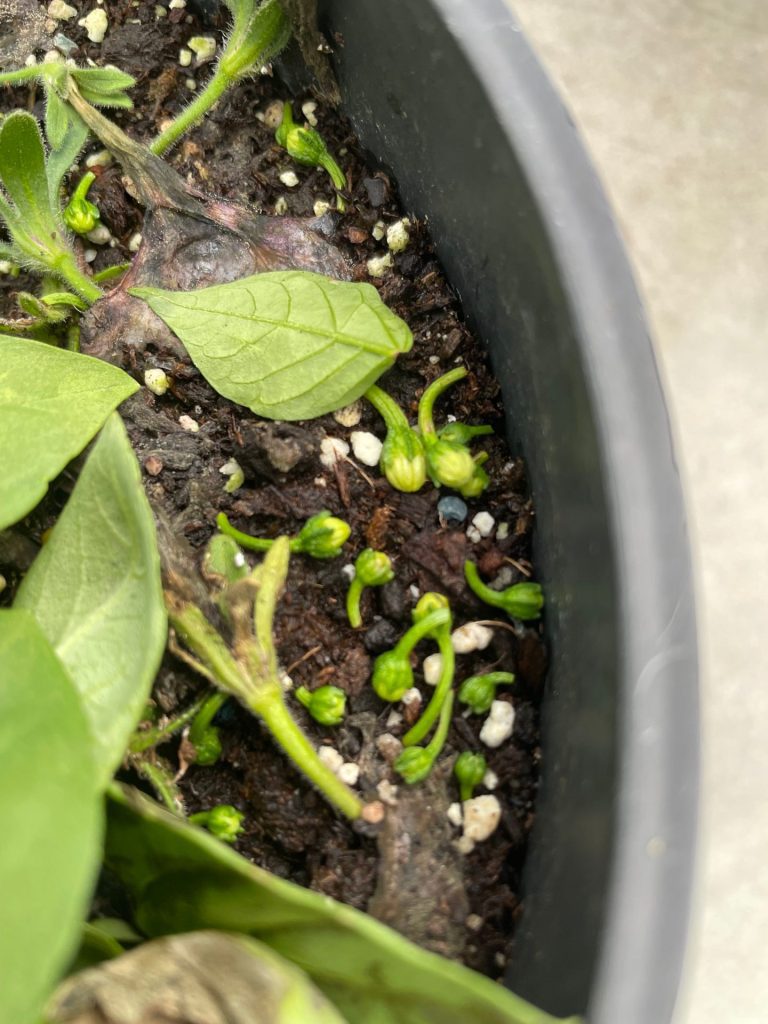
“Agriculture is our wisest pursuit, because it will in the end most contribute to real wealth, good morals, and happiness.” ~Thomas Jefferson
Here’s what I had originally intended to publish a few months back, but got sidetracked with some other projects for the website:
It’s late June, which means that in my zone (despite the surprisingly cold spring we’ve had), tomatoes, peppers, and many other related annual crops are tall, lithe, and ready to produce fruit.
Thus far, I’ve prevented these plants from blooming. You might wonder why I’d do such a thing when the plants are signaling to me that they’re ready to bring forth a bounty.
I have a good reason for it, and it’s something I wish I knew years ago when I first took an interest in growing things.
The Pragmatic Reason for Pinching Blossoms

To understand why it can be beneficial to pluck off the blossoms of a plant while it’s still growing, we need to rewind a little bit, back to when these plants were just past the seedling stage, hardly knee-high to a hop-toad.
The main thing you need to know is that while these plants are currently mature and healthy, they’ve been trying to blossom for quite a while now – perhaps as early as mid-May, which is troubling because the plants were still very young then.
No, I’m not even suggesting that that would be too early because of the risk of frost. At that point, these little plants were spending most of their time indoors at night time, anyway. If there was a concern of frost damage, it would likely kill the whole plant, and not just force it
to drop its blossoms (although low temperatures can also do that).
My concern lies with the fact that once a plant starts to blossom, that’s all the plant wants to do. I don’t understand the chemical or genetic reason for this, but in my experience, once an annual plant (like tomatoes or peppers) starts to bloom, that’s all that’s going to happen from there on out.
Once blossoming begins, the plant is going to halt foliation and put all of its energy into producing flowers, and from there, fruit.
In the case of a young plant, that means it’s not going to get any bigger or stronger. It would just go right to flowers and then produce fruits.
Sounds like a good thing, does it not, since you planted these plants for produce in the first place. Well, let a little critical thinking answer that question for you. Which plant will produce more (and better quality) fruit – the one that’s six inches tall and hasn’t even developed a full, healthy root system yet, or the once that’s four feet tall and has plenty of foliage and a well-developed root system to fuel the production of those offspring?
The answer is self-explanatory. So on the one hand, the main reason I pinch off early blossoms until the plant is ready is to allow it to continue growing. Once it forms blooms, growth will basically stop.

So pinching off the early blossoms will encourage your plants to grow bigger and healthier and will enable them to generate more generous yields down the line.
This is all from my experience, by the way, but before writing this post, I decided to do a little research to see if I could back up this research with more substantial scientific information.
Does It Really Help the Plant?
Apparently, there is some substance to my observation. According to my research, pinching off early blossoms actually encourages the plant to produce the hormones that drive foliation – big leafy growth.
Guess what plants need to feed their flowers and fruit as they develop? The sugars and other nutrients developed in the leaves. So – in other words – the more foliage, the more of a “power station” the plant has to feed its yield later on.
My twenty-seconds of botanical plumbing have also led me to the conclusion that pinching off blossoms also encourages the plant to develop stronger, healthier roots, too, which are also needed to support a plant during reproduction – that is, blooming and producing fruit.
The key takeaway is that pinching off the earliest blooms will encourage the plant to develop more flowers later on, and to develop healthier, bigger fruit – and more of them.
One thing to remember here is this: Once your plant is healthy and big enough that (in your estimation) it can support fruit, you should stop pinching off blooms.
Let the flowers develop and fruit start to form. At that point, though, you might want to pinch off any blooms that develop thereafter. The more fruit a plant has, the more its resources will be taxed. If you want to grow a few, big, healthy peppers or tomatoes, pinch off the competing blossoms once your first fruits start to form.
If you want to produce as many as possible, let all of the blossoms develop.
One more thing: at a certain point, a plant will drop some blossoms if there are too many on it and it is still supporting fruit. If you have fruit on the vine and the plant is dropping blossoms, the reason may be because you need to harvest what’s already developed.
Harvest some of the fruits and see if that gets your plant to start producing again.
Try It Next Year and See
If you’ve never practiced pinching early blossoms, I suggest you start. Try it next year when you’re growing plants like peppers, tomatoes, even unrelated annuals like watermelons, cantaloupe, beans or peas. All of these plants can potentially be encouraged to develop more fully and generate larger yields by delaying their desire to bloom.
~The Eclectic Outfitter